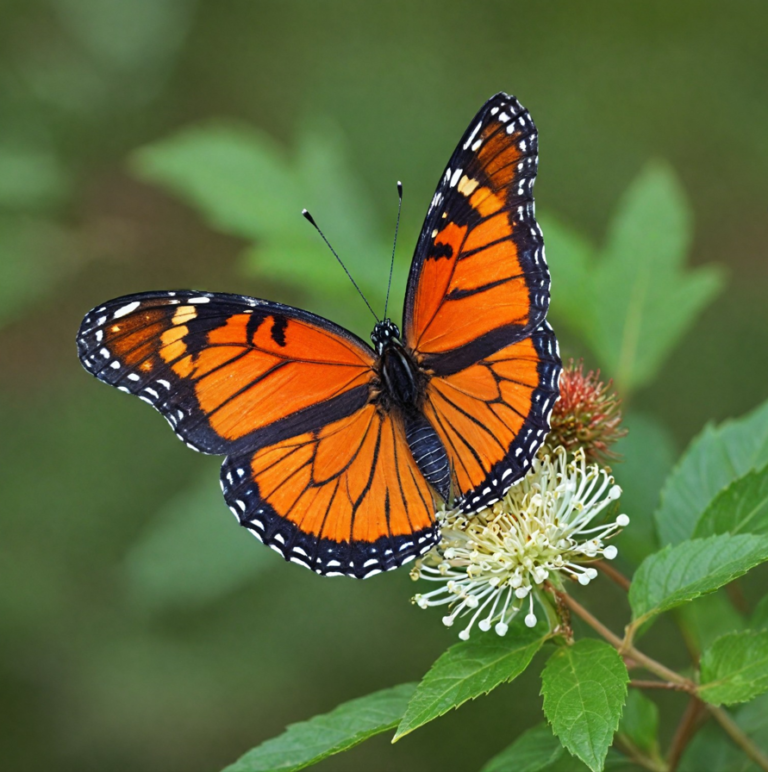Buttonbush (Cephalanthus occidentalis) is a beautiful native shrub ideal for wetlands, gardens, and ponds. If you’re interested in learning how to grow and care for Buttonbush, this guide will provide detailed steps on its care, planting, and propagation.
Why Grow Buttonbush?
Growing Buttonbush offers many ecological benefits. Learning how to grow and care for Buttonbush will enhance your garden’s appeal by attracting pollinators like butterflies and birds, making it a valuable addition to any wildlife-friendly landscape.
Buttonbush is similar to other water-loving plants like Snowberry. For more information on wetland plants, you can explore this detailed guide on how to grow and care for Snowberry Bush.
Ecological Benefits
Not only is Buttonbush a favorite in wetland restoration projects, but it also attracts various wildlife, including waterfowl and songbirds. Its nectar-rich flowers are particularly attractive to pollinators, while its seeds provide food for birds. Learn how to make your garden more wildlife-friendly by growing Buttonbush, as detailed in this guide on growing Buttonbush shrubs.
Best Growing Conditions for Buttonbush
To successfully grow Buttonbush, it’s important to provide the right environment. This section will focus on soil types, water needs, and sunlight exposure to ensure you fully understand how to grow and care for Buttonbush in various settings.
Soil Requirements
Buttonbush prefers moist, well-drained to waterlogged soils, making it perfect for ponds, streams, or even boggy areas in your garden. It’s highly adaptable but does best in soils rich in organic matter.
- Soil Type: Tolerates sandy, loamy, and clay soils but thrives in constantly moist areas.
- Watering Needs: Water regularly, especially in drier climates, as Buttonbush prefers consistent moisture.
Light Preferences
While Buttonbush can tolerate some shade, it thrives best in full sun, which helps promote abundant flowering and faster growth.
- Full Sun: Promotes more blooms and vigorous growth.
- Partial Shade: Works in hotter climates but may result in fewer flowers.
How to Plant Buttonbush
When and Where to Plant
Plant Buttonbush in early spring or fall to give it ample time to establish roots before extreme temperatures set in.
- Choose a location near water bodies like ponds, marshes, or areas prone to flooding. Buttonbush can handle standing water, making it an excellent choice for poorly drained areas.
Planting Steps
- Prepare the Soil: Amend the soil with compost to improve water retention and nutrient content.
- Dig the Hole: Make it twice as wide as the root ball and equally deep.
- Plant the Shrub: Place the Buttonbush in the hole and backfill with soil.
- Water Thoroughly: Ensure the soil around the plant is thoroughly soaked to help it settle.
Caring for Buttonbush
Buttonbush is low-maintenance but requires some attention to thrive.
Pruning Buttonbush
Prune Buttonbush in late winter or early spring to shape the plant and encourage healthy growth. Regular pruning also helps manage its size and prevents it from becoming too large for smaller gardens.
Mulching and proper watering will also help in maintaining the health of your Buttonbush. Similar methods can be used for other plants, such as managing nutrient supply through compost or organic fertilizers. Learn more about enhancing your garden’s health with natural methods in this guide on boosting your plants with manure tea.
Watering and Mulching
During its first year, water Buttonbush consistently to help establish a robust root system. Once established, it’s highly tolerant of wet soils and can even withstand occasional droughts.
- Mulching: Apply mulch around the base to retain moisture and suppress weeds. Mulch also helps regulate soil temperature.
Common Pests and Diseases
While Buttonbush is generally pest and disease-resistant, a few issues can arise.
Pests
- Aphids: These small pests can cause curling leaves and stunt growth. Use insecticidal soap to manage them.
- Caterpillars: Some caterpillars may feed on Buttonbush leaves, but handpicking them off the plant is an effective control method.
Diseases
- Leaf Spot: Caused by fungal infections, this can result in yellowing or black spots on leaves. Improve air circulation by pruning and avoid overhead watering.
- Root Rot: Overwatering or poorly drained soils can lead to root rot. Ensure the planting area has proper drainage, though Buttonbush can tolerate wet soils better than most plants.
Propagating Buttonbush
Buttonbush can be propagated through both seeds and cuttings.
Propagating from Seeds
- Collect Seeds: Harvest seeds from mature Buttonbush in the fall.
- Stratify the Seeds: Store seeds in a moist, cool environment for 2-3 months to break dormancy.
- Sow in Spring: Sow stratified seeds in moist soil and keep them consistently watered until they germinate.
Propagating from Cuttings
- Take Cuttings: In late spring or early summer, take 4-6 inch cuttings from healthy branches.
- Rooting Hormone: Dip the cut end in rooting hormone for better results.
- Plant the Cuttings: Place them in well-draining soil and keep the soil moist until roots form.
FAQs About Growing and Caring for Buttonbush
1. What kind of soil is best for Buttonbush?
Buttonbush thrives in moist to wet soils, especially those near water bodies. It can handle poorly drained soil but grows best in nutrient-rich, organic soils.
2. Can Buttonbush grow in full sun?
Yes, Buttonbush prefers full sun, which helps promote abundant flowering. It can tolerate partial shade but may produce fewer blooms.
3. How fast does Buttonbush grow?
Buttonbush has a moderate growth rate and can grow between 2 to 4 feet per year in optimal conditions.
4. When should Buttonbush be pruned?
Prune Buttonbush in late winter or early spring before new growth begins. This helps maintain its shape and remove dead or damaged branches.
5. Does Buttonbush attract wildlife?
Yes, Buttonbush is excellent for attracting pollinators like butterflies and bees, as well as birds that feed on its seeds.
By following these steps, you’ll have a healthy and thriving Buttonbush in your garden, adding both beauty and ecological value. Whether you’re looking to enhance a wetland area or simply attract more pollinators, Buttonbush is a fantastic choice for your landscape.
